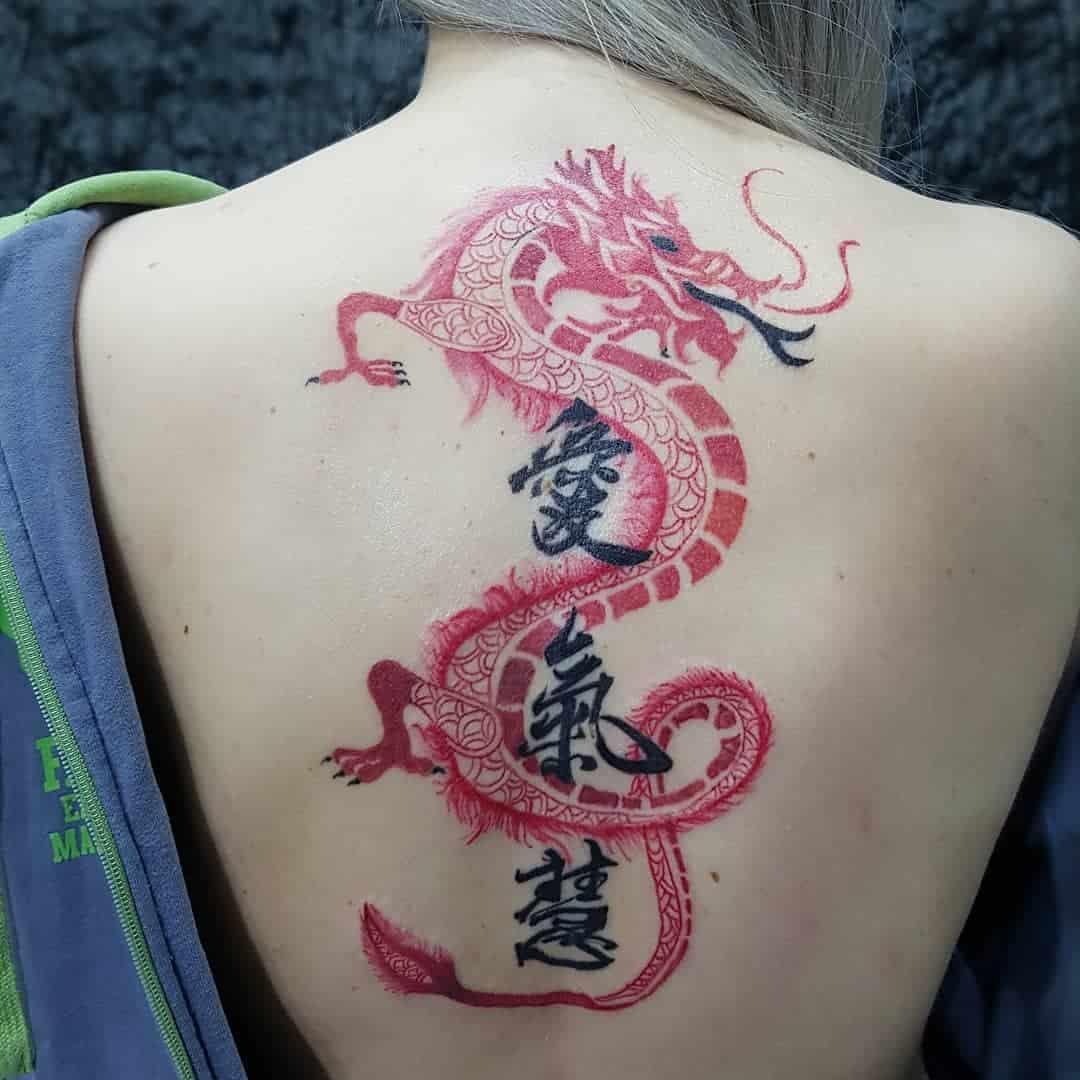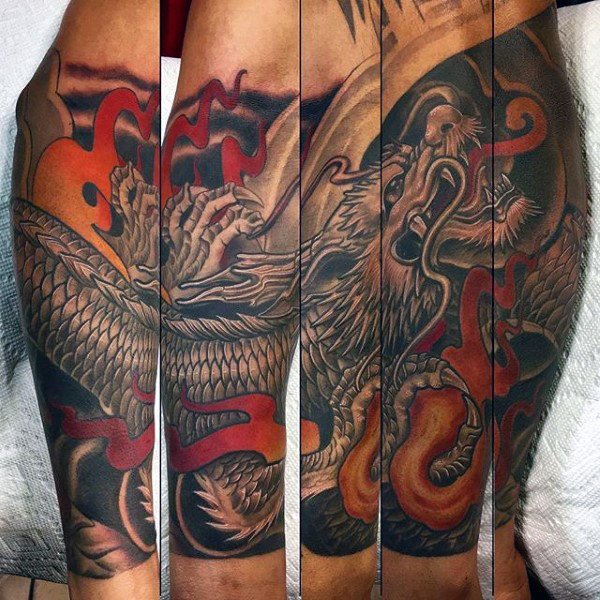The Chinese dragon tattoo has become a cultural phenomenon that transcends borders and generations, captivating people from all walks of life. This iconic artwork represents more than just a beautiful design; it embodies deep cultural significance, historical roots, and symbolic meanings that resonate with both Eastern and Western audiences. If you're considering getting a Chinese dragon tattoo or simply want to learn more about its origins and meanings, this article will provide comprehensive insights into everything you need to know.
Throughout history, the Chinese dragon has been regarded as a symbol of strength, wisdom, and prosperity. Unlike Western dragons, which are often depicted as fire-breathing monsters, Chinese dragons are revered as benevolent creatures that bring good fortune and protection. This fundamental difference makes Chinese dragon tattoos particularly appealing to those who seek meaningful body art that tells a story.
In recent years, the popularity of Chinese dragon tattoos has surged, with celebrities, athletes, and everyday individuals embracing this art form. However, it's essential to understand the cultural significance and symbolism behind these tattoos to ensure they are respected and appreciated in their true form. This article will explore the history, meanings, and design variations of Chinese dragon tattoos, helping you make an informed decision if you're considering one for yourself.
Read also:Lifetime Fitness San Jose Your Ultimate Guide To Fitness And Wellness
Table of Contents
- History of the Chinese Dragon
- Symbolism and Meaning of Chinese Dragon Tattoos
- Popular Chinese Dragon Tattoo Designs
- Best Placement for Chinese Dragon Tattoos
- Different Styles of Chinese Dragon Tattoos
- Tattoo Care and Maintenance
- Celebrities with Chinese Dragon Tattoos
- Cultural Considerations
- Cost and Process of Getting a Chinese Dragon Tattoo
- Conclusion
History of the Chinese Dragon
The Chinese dragon, or "Long" in Mandarin, has been an integral part of Chinese culture for thousands of years. Archaeological evidence suggests that dragon-like symbols were present in Chinese art as early as the Neolithic period, around 5000 BCE. Over time, these symbols evolved into the majestic dragons we recognize today.
Origins and Evolution
The origins of the Chinese dragon are deeply rooted in mythology and folklore. According to Chinese legend, dragons were believed to control the elements, particularly water, and were responsible for bringing rain, which was crucial for agriculture. This association with water made dragons symbols of fertility and abundance.
As Chinese civilization developed, the dragon became a symbol of imperial power. Emperors were often referred to as "dragons" and were believed to have divine connections. The dragon motif was prominently featured in imperial robes, architecture, and art, signifying authority and prestige.
Symbolism and Meaning of Chinese Dragon Tattoos
Chinese dragon tattoos carry a wealth of symbolic meanings that reflect the cultural significance of dragons in Chinese society. These tattoos are not merely decorative; they represent powerful concepts that resonate with both traditional and modern values.
Key Symbolic Meanings
- Strength and Power: Dragons are associated with immense strength and power, making them ideal symbols for those who wish to convey resilience and determination.
- Wisdom and Intelligence: In Chinese culture, dragons are seen as wise and knowledgeable creatures, embodying intellectual prowess and insight.
- Good Fortune and Prosperity: Dragons are believed to bring good luck and prosperity, making them popular choices for those seeking positive energy in their lives.
- Protection and Guardianship: Dragons are often depicted as protectors, symbolizing safety and security for those who wear their image.
Popular Chinese Dragon Tattoo Designs
Chinese dragon tattoos come in a variety of designs, each with its own unique appeal. Artists often incorporate elements such as clouds, waves, and other mythical creatures to enhance the visual impact of these tattoos.
Design Variations
Some popular design variations include:
Read also:What Did Shawn Dawson Do Unraveling His Journey And Impact
- Traditional Chinese Style: This style features intricate details and vibrant colors, emphasizing the dragon's majestic appearance.
- Black and Grey Realism: For a more modern look, many artists create realistic dragon tattoos using black and grey shading techniques.
- Watercolor Technique: Watercolor dragon tattoos offer a softer, more artistic approach, blending colors seamlessly to create a dreamlike effect.
Best Placement for Chinese Dragon Tattoos
Choosing the right placement for your Chinese dragon tattoo is crucial, as it affects both the design's visibility and its overall impact. Popular placement areas include the back, chest, arms, and legs, each offering unique advantages depending on the size and style of the tattoo.
Factors to Consider
When selecting a placement, consider the following:
- Size and Detail: Larger tattoos with intricate details are best suited for areas with ample space, such as the back or chest.
- Visibility: If you want your tattoo to be easily visible, areas like the forearm or shoulder are ideal.
- Comfort: Ensure the placement is comfortable for you, as tattoos can take several hours to complete.
Different Styles of Chinese Dragon Tattoos
Artists employ various styles to create Chinese dragon tattoos, each offering a distinct aesthetic. From traditional to modern interpretations, these styles cater to diverse tastes and preferences.
Exploring Styles
Here are some popular styles:
- Neo-Traditional: Combines classic elements with modern twists, resulting in bold and vibrant designs.
- Minimalist: Focuses on simplicity and clean lines, perfect for those who prefer subtlety.
- Japanese Fusion: Incorporates elements from Japanese tattoo art, creating a harmonious blend of Eastern aesthetics.
Tattoo Care and Maintenance
Proper care is essential to ensure your Chinese dragon tattoo retains its vibrancy and detail over time. Follow these tips to maintain your tattoo's appearance:
Care Tips
- Keep It Clean: Gently wash the tattoo with mild soap and water to prevent infection.
- Moisturize Regularly: Use a tattoo-specific moisturizer to keep the skin hydrated and promote healing.
- Avoid Sun Exposure: Protect your tattoo from direct sunlight, as UV rays can fade its colors over time.
Celebrities with Chinese Dragon Tattoos
Many celebrities have embraced the allure of Chinese dragon tattoos, further popularizing this art form. From musicians to actors, these individuals showcase their tattoos with pride, inspiring fans worldwide.
Notable Examples
Some well-known celebrities with Chinese dragon tattoos include:
- Justin Bieber: Known for his extensive collection of tattoos, Bieber features a Chinese dragon design on his arm.
- Celine Dion: The legendary singer sports a dragon tattoo on her back, symbolizing strength and resilience.
- Dwayne Johnson: The "Rock" has a prominent dragon tattoo that complements his muscular physique.
Cultural Considerations
Before getting a Chinese dragon tattoo, it's important to understand the cultural implications and show respect for its origins. While these tattoos are widely appreciated, they carry deep cultural significance that should not be overlooked.
Respecting Tradition
To honor the cultural roots of Chinese dragon tattoos, consider the following:
- Research the Symbolism: Educate yourself about the meanings behind the dragon to ensure your tattoo aligns with its traditional values.
- Consult an Experienced Artist: Work with a tattoo artist who specializes in Chinese designs to create an authentic and respectful piece.
Cost and Process of Getting a Chinese Dragon Tattoo
The cost of a Chinese dragon tattoo varies depending on factors such as size, complexity, and the artist's reputation. On average, you can expect to pay anywhere from $100 to $500 or more, depending on the scope of the project.
What to Expect
The tattooing process typically involves:
- Consultation: Discuss your design ideas and expectations with the artist to ensure a clear vision.
- Preparation: The artist will prepare the area and outline the design before beginning the tattooing process.
- Completion: Depending on the size and complexity, the tattoo may take several hours or multiple sessions to complete.
Conclusion
Chinese dragon tattoos represent a beautiful fusion of art, culture, and symbolism. By understanding their historical roots, cultural significance, and design variations, you can make an informed decision when considering this iconic body art. Whether you choose a traditional or modern interpretation, a Chinese dragon tattoo is sure to make a lasting impression.
We invite you to share your thoughts and experiences in the comments below. If you enjoyed this article, please consider sharing it with others who might find it valuable. For more insights into tattoos and body art, explore our other articles on the website.

